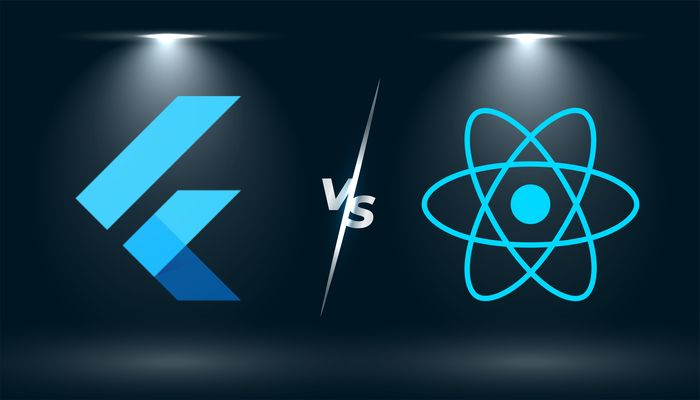React Native vs Flutter: What's the Difference?
React Native and Flutter are two popular mobile app development frameworks. Both are designed to help developers build native mobile apps for iOS and Android platforms, but they differ in many ways. In this post, we'll explore the differences between React Native and Flutter and determine the best use cases for each framework.


React Native is a framework developed by Facebook in 2015. It uses JavaScript and React to build native mobile apps. React Native allows developers to build apps for both iOS and Android platforms using a single codebase. React Native's architecture is based on the concept of "learn once, write anywhere."
Flutter, on the other hand, is a mobile app development framework developed by Google in 2017. Flutter uses Dart as its programming language and allows developers to build high-performance, natively compiled apps for mobile, web, and desktop platforms. Flutter's architecture is based on the concept of "write once, run anywhere."
One of the key differences between React Native and Flutter is their approach to rendering. React Native uses native components, which means that it uses the same UI building blocks as native apps. This results in a more native look and feel. Flutter, on the other hand, uses a custom rendering engine, which enables it to render UI elements without the need for platform-specific widgets. This approach allows Flutter to offer more control over the look and feel of the app.
Another key difference between React Native and Flutter is their approach to development. React Native relies heavily on third-party libraries and modules to extend its functionality, whereas Flutter has a rich set of built-in widgets and tools that make it easier to build complex UIs. This can make development with Flutter faster and more efficient.
Best Use Cases for React Native
React Native is ideal for building apps that require a high degree of customization or integration with existing web apps. React Native's JavaScript-based approach allows for fast development cycles, and its use of native components ensures a native look and feel.
React Native is also a good choice for developers who are already familiar with React. Since React Native uses the same architecture as React, developers can leverage their existing knowledge and skills to build mobile apps.
Best Use Cases for Flutter
Flutter is ideal for building apps that require high-performance and highly customized UIs. Flutter's custom rendering engine enables developers to create highly customized UI elements that look and feel native. This makes Flutter a good choice for building apps with complex animations and UI elements.
Flutter is also a good choice for developers who want to build apps for multiple platforms. Flutter's "write once, run anywhere" approach makes it easy to build apps for both iOS and Android with a single codebase. Flutter uses Dart programming language, which is easy to learn and can help developers build high-performance apps.
Flutter also comes with a rich set of pre-built widgets that can be customized to create beautiful and responsive UI designs. The framework also has a hot reload feature that enables developers to quickly see the changes they make to the code in real-time, making the development process faster and more efficient.
Additionally, Flutter has a growing community of developers who actively contribute to its development and provide support through various online forums and resources. This community ensures that Flutter remains up-to-date with the latest trends in mobile app development.
Overall, Flutter is a great option for developers looking to build high-performance, cross-platform apps quickly and efficiently.
Conclusion
React Native is a good choice for developers who are already familiar with JavaScript and want to leverage their existing knowledge to build cross-platform apps. It also has a large community and a wide range of third-party libraries and tools that can help streamline the development process.
On the other hand, Flutter is a good choice for developers who want to build high-performance apps with a single codebase using a modern programming language like Dart. Flutter also has a rich set of pre-built widgets and a hot reload feature that can help speed up the development process.
Ultimately, both frameworks are viable options for building cross-platform apps, and developers should consider their specific requirements and preferences before making a decision.